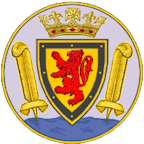History 1925 to 1950
Saltash was now rapidly gaining modern amenities and public services. In 1926 a water storage container was erected at Longstone to improve the fresh water supply to the higher parts of the town, and a branch of the Cornwall County Library opened at the YMCA in Fore Street, later moving to North Road Infant School. In 1927 a new County School opened in Long Park Road, and Fore Street gained a Post Office and a Fire Station. By 1928 electricity was being supplied to the town from Plymouth via underwater cables, and in 1929 the Saltash Volunteer Fire Brigade received its first fire engine.
On the waterside there was a small boat building revival which lasted for around fifteen years, and other small industries opened in the area, including a motor company and Daw’s creamery, established in 1932 on the site of the old Rustic Tea Gardens. Plans were drawn up for an open-air swimming pool to replace the swimming area north of New Wharf, and it opened in 1936.
The Borough of Saltash was extended in 1934 to include the civil parish of St Stephens, thus increasing the area of the borough from some 80 hectares (200 acres) to over 2000 hectares (5000 acres), most of the area once included in the medieval Manor of Trematon.
The old Fore Street coaching inn, the Green Dragon Hotel, was demolished in 1935 and replaced by the Co-op. However, having lost one landmark, Saltash gained another in the same year when Bishop Barrett laid the foundation stone for the Church of Our Lady of Perpetual Succour, at that time attached to St. Ann's Convent, but later to become the Roman Catholic parish church.
War broke out in 1939. In 1940 the Plymouth Blitz began, and Saltash residents could see the red glow in the sky over Plymouth as it burned. In April 1941 Saltash received its own share of the death and destruction, when German bombers were trying to cut off rail transport into Cornwall. Aiming for the Royal Albert Bridge, and consequently flying east to west to maximize their chances of a direct hit, they missed their target and a number of incendiary and high explosive bombs fell in the town. Seven residents were killed, and over twenty buildings were destroyed. All the churches in Saltash were hit, and North Road school was damaged. The Wesley Church was completely demolished, as were the Imperial Picture House, a GWR goods station, and Fore Street’s last surviving Tudor building, together with properties in Belle Vue Road, Glebe Avenue, and Port View.
Saltash played its part in helping Plymouth during the bombing raids. Six members of the Saltash Fire Service lost their lives at Devonport, and the 2nd Saltash Scout Troop was the first troop in the country to form an official Auxiliary Fire Service unit. Their efforts were truly heroic and they made national news when one of their members, 18-year-old Donald Cummins, lost his life while on active service. The Scouts had been attempting to douse a blazing shed and coal dump at the Railway Goods Station when two bombs fell nearby. Donald Cummins was fatally injured and two other scouts were seriously wounded by shrapnel – Bernard Doidge in the back, and Sydney Cummins (Donald's younger brother) in the arm and leg.
From 1943 to 1945 the shore just north of Ashtor Wharf was deployed as a sub-base of the United States Naval Advanced Amphibious Base (USNAAB) at Plymouth. One of its most significant roles was to service the landing craft in the run-up to the D-Day landings, and the remains of the landing craft maintenance gridiron built on the foreshore can still be seen at low tide.
At the end of the war the Reverend W H Prior of St Nicholas and St Faith Church was probation officer for this area, and he became conscious of the increasing number of juveniles being placed under his control, especially from the lower end of the town. The old Mission Hall had not been used for regular worship since 1941, and the Parochial Church Council leased the building to him for a payment of one shilling per annum. Thus began the Waterside Boys Club, later to be known as the Saltash Boys Club and eventually to become the Livewire Youth Project. Harry Taylor was appointed leader, and stayed with the Club until his death more than 25 years later.
page updated 2016-06-07
